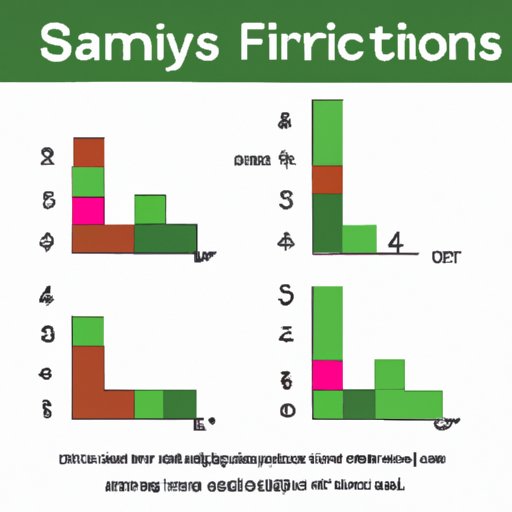Introduction
Fractions are an essential part of mathematics that represent a part of a whole. Simplifying fractions is a common math problem that many students encounter, and it is a topic that is often included in standardized tests. Simplifying fractions can sometimes be a bit tricky, but with a little bit of practice and guidance, it becomes easy. This article is written for beginners who seek to learn how to simplify fractions easily. In this article, we will discuss step-by-step instructions, visual aids, real-world examples, and online resources that can help you simplify fractions effortlessly.
Providing Step-by-Step Instructions
The process of simplifying fractions involves dividing both the numerator and denominator by the greatest common factor (GCF). The GCF is the largest number that divides both the numerator and denominator without leaving a remainder. Here are the steps for simplifying fractions:
- Identify the numerator and denominator of the given fraction
- Find the GCF of the numerator and denominator
- Divide both the numerator and denominator by the GCF
- The quotient obtained is the simplified fraction
For example, let’s simplify the fraction 12/36:
- The numerator is 12, and the denominator is 36
- The GCF of 12 and 36 is 12
- Dividing both the numerator and denominator by 12 gives us 1/3
- Therefore, 12/36 simplifies to 1/3
It is essential to note that you must divide both the numerator and denominator by the same number to keep the value of the original fraction unchanged.
Common mistakes people make when simplifying fractions include dividing by the wrong factor, forgetting to simplify the fraction fully, or forgetting the negative sign if the original denominator was negative.
Using Visual Aids
Visual aids can be helpful when learning how to simplify fractions. Many websites offer infographics or diagrams that visually demonstrate how to simplify fractions. Below are a few links to helpful visual aids:
- https://www.mathsisfun.com/simplifying-fractions.html
- https://www.khanacademy.org/math/arithmetic/fraction-arithmetic/simplifying-fractions/v/simplifying-a-fraction
- https://www.youtube.com/watch?v=v0YEaeIClKY
Visual aids can help the reader understand the concept more easily by providing a clear representation of the steps involved in simplifying fractions. The visual representation can help demonstrate the process’s logic as well as the relationship between the numerator and denominator.
Offering Real-World Examples
Fractions are often used to represent and solve real-world problems. Here are a few examples of when fractions need to be simplified:
- When cooking, you may need to divide a recipe’s servings to create a smaller or larger portion size.
- When calculating taxes or discounts, you may need to simplify fractions to express them as percentages.
- When reducing a recipe, you may need to simplify a fraction to represent proper measurements.
Real-world examples allow the reader to see how fraction problems can be applied outside the context of mathematics. Here’s an example of simplifying a fraction in a recipe. Suppose a recipe serves four people and requires one whole cup of milk. You need to adjust the recipe to feed only two people. Since two is half of four, you need to divide all the recipe measurements in half. Therefore, the new measurement for milk would be 1/2 cup.
Incorporating Online Resources
Online resources such as educational videos or interactive games can help learners visualize or practice simplifying fractions. Below are a few helpful resources:
- https://www.mathplayground.com/simplify_fractions.html
- https://www.ixl.com/math/grade-6/simplify-fractions
- https://www.learningfractions.net/simplify-fractions-game.php
These resources can help supplement the instruction given in the article by providing the reader with numerous ways to practice simplifying fractions. Interactive games can help the reader build confidence by practicing problems in a stress-free environment.
Engaging the Reader
Practicing and applying what you’ve learned is one of the most effective ways to master the concept of simplifying fractions. Here’s an example quiz to practice the knowledge so far:
- What is the GCF of 12 and 24?
- 4
- 6
- 3
- 12
- Simplify the fraction 6/18.
- 1/3
- 2/9
- 1/4
- 6/9
After answering these questions, you can check your solutions with the answer key below.
- d. 12
- a. 1/3
Conclusion
In conclusion, simplifying fractions is a critical math skill that students will require beyond their educational years. By following the step-by-step instructions and using the visual aids, real-world examples, and online resources, you can learn how to simplify fractions with ease. Practicing interactive examples and quizzes can help you master the concept. Remember, the best way to improve your skills is to practice regularly and consistently.
